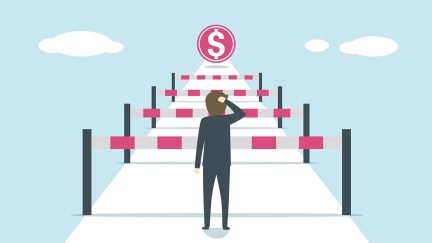Few Retirees Keep Assets in Their DC Plan
Participants who were age 60 or older when they retired were more likely to keep assets in the plan if it permitted installment payments, according to Alight Solutions.
Citing MetLife’s Lifetime Income Poll, Alight Solutions says that in 2012, only 9% of employers agreed with the statement, “The sole purpose of the DC [defined contribution] plan is to serve as a source of retirement income.” By 2016, this had jumped to 85% of employers.
This prompted Alight Solutions to study what workers do with their assets once they retire. Among participants who terminated in the past 10 years, 40% of assets remained in the plan as of year-end 2017, but because people with smaller balances were more likely to cash out, only 26% of people who terminated in the past 10 years remained in the plan as of the end of 2017. Forty percent cashed out, 8% did a combination of the two and 26% rolled their money into an IRA.
Participants who were age 60 or older when they retired were more likely to keep assets in the plan if it permitted installment payments. Alight Solutions’ recordkeeping platform had higher asset retention than other recordkeepers, with only 10% of people on its platform rolling their money over to an individual retirement account (IRA) versus 25% across the industry. Alight attributes this to its not offering IRAs.
Alight also says the IRA rollover market is highly competitive and crowded. Thus, no single IRA provider received a large percentage of rollovers. Alight says 5,000 different IRA providers have received IRA rollovers in the past 10 years.
Alight says employers carefully monitor how money leaves their DC plan for several reasons, the first being concern that a 401(k) recordkeeper could prompt participants to roll over their assets from the low-cost DC plan, subject to fiduciary duties, into a higher-cost IRA. Employers are also keenly aware that if they retain retirees’ assets, the size of the plan is higher and, thus, they have more bargaining power with respect to service providers’ fees.
Employers also know that workers who retire from their company with DC balances would be better served with lower fees and the protection of being invested in a plan subject to the Employee Retirement Income Security Act (ERISA), Alight says.
In terms of the assets of individuals who terminated between 2008 and 2017, as of year-end 2017, 40% of assets remained in the plan, 15% were cashed out and 45% were rolled over.
“The discrepancy between the headcount and the asset weighting arises from two primary facts,” Alight says in its report, “What do workers do with their savings after they leave their employers?”
“First, people with small balances were more likely to cash out their benefits than people with large balances,” Alight says. “Eighty percent of people with balances of less than $1,000 cashed out their entire balances, compared to only 2% of people with balances of $250,000 or more. Second, there are many more people with small balances than large ones. Individuals with balances of $1,000 or less outnumbered those with balances of $250,000 or more by a factor of more than three to one.”
In the past decade, within a year of termination, 55% to 60% of people took a withdrawal, either through a cash-out or a rollover. In the following year, another 15% took action. “Assets leaving the plan followed a similar pattern,” Alight says. “Most of the withdrawals took place within the first few years following termination, but slowed down and leveled off after about five years.”
Alight says that in 2017, two-thirds of plans offered installment withdrawals up from 51% in 2007. However, only 3% to 6% of people who terminated after age 60 chose an installment payment. Cash distributions and withdrawals are much more common.
Alight recommends that employers monitor how much money from their plans goes into IRA, and that they educate participants about their retirement plan choices, particularly discouraging younger workers who leave for other jobs from cashing out. Finally, Alight says employers should begin to embrace lifetime income options, starting with installment payments.
Alight’s full report can be downloaded here.
You Might Also Like:

Rise in Savings, Markets Drive Fidelity Retirement Accounts to Record Highs

IRS Raises 401(k) Contribution Limit to $24,500; IRA Limit to $7,500

Distribution Flexibility Helps Retirees Preserve Assets, per Vanguard
« End-of-Life Planning Outstrips Retirement Care Planning Among Baby Boomers